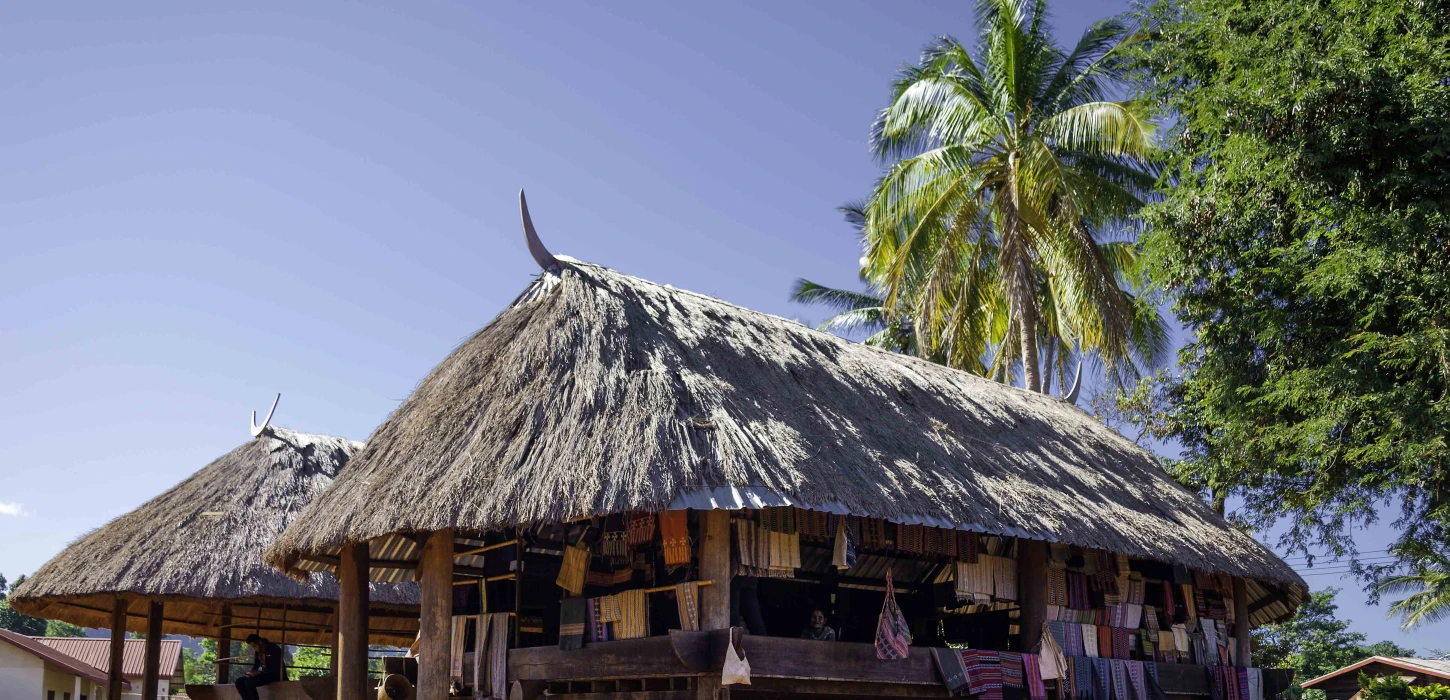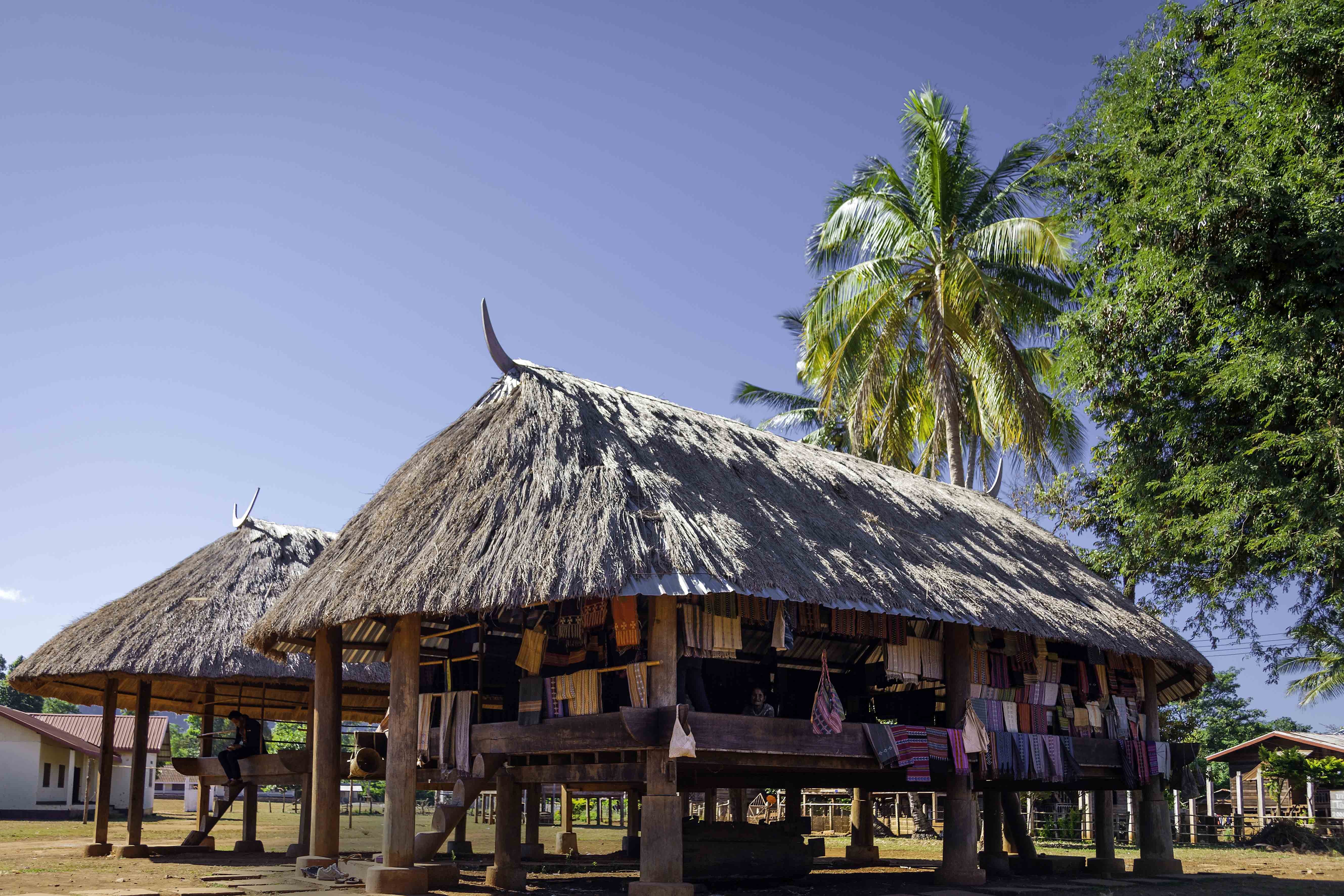
One of the beloved characteristics of Laos is its cultural diversity. In Salavan Province alone, there are 12 distinct ethnic groups, the majority of which are primarily of the Austroasiatic (Mon-Khmer) language family. The largest sub-group in the region is the Katou ethnic group, who are predominantly scattered along the Bolaven Plateau (Paksong, Salavan, Sekong) and Attapeu.
To learn more about the Katou tribe, we traveled from Pakse to Ban Khan Don – a multi-ethnic village between Sekong and Salavan province. The village is named after the Khan Don river, an homage to their source of life. Ban Khan Don is home to several ethnic groups aside from the Katou, such as the Alak and Nge people. Upon arriving at the community house, a rectangular-shaped wooden hut usually located at the center of the village, we were amazed at the artifacts displayed inside. These told the story of the Katou traditional way of life from when they were still living on the highlands until they decided to settle in their current location in 1961. The artifacts are mostly wooden or bone and are interesting to see. We recommend you book a village guide to learn more about the meaning and the story behind the artifacts in English.
Every year since 1996, the village celebrates the Katou festival on March 5; and every 10 years there is an even bigger celebration where members of the tribe from other provinces attend. During the festival, you can expect a lot of dancing, especially around the community house, and an abundance of food. On the first day, the villagers dance around the main hut three times – as the community believes that the number three, and odd numbers, in general, are good luck – to pay respect to their ancestors. The locals also dress a sacrificial buffalo with accessories during this day.
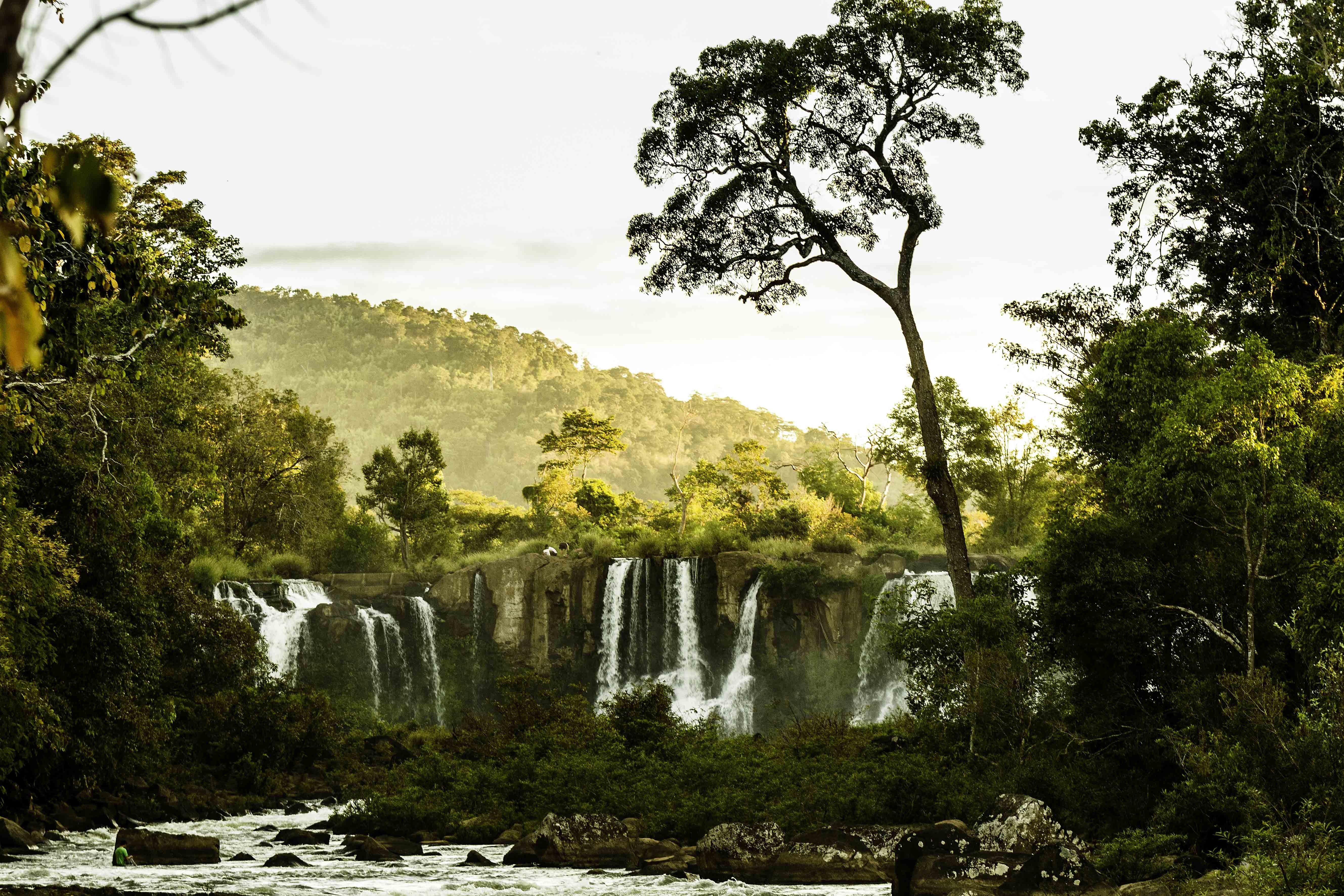
We took a walk around Ban Khan Don to learn more about their textiles and coffin-making, an unusual sight in Laos where it’s customary to cremate rather than bury the deceased. Families carve wooden coffins for each family member well before their deaths and the intricacy of the coffin design depends on one’s rank in the village (or how deep one’s pockets are). Near the community house, tourists can also see members of the Talieng ethnic group weaving textiles by hand on looms, an important part of their tradition as well as providing a source of income. The striped lines, geometric stripes and decorative patterns denote both cultural beliefs and important historic events of the tribe.
The provinces of Sekong, Salavan, and Attapeu are known for their numerous waterfalls, leftover UXO collection, cassava industry, and Katou textiles. There are several well-known, and some lesser-known, shops in this region where you can purchase these textiles: Mr. Vieng’s in Salavan, Mr. Khamlay’s in Sekong, and around the morning market in Attapeu. Though there are distinct variations in design and material used, we particularly liked Mr. Khamlay’s natural dyed textiles not only for the traditional Lao sinh, but also for decorations around the house like table runners, rugs, and placemats. While in Sekong, try to visit the lesser-known but equally beautiful Tad Faek located in Lamam District, which got its name from the faek grass that was plentiful in the area before.
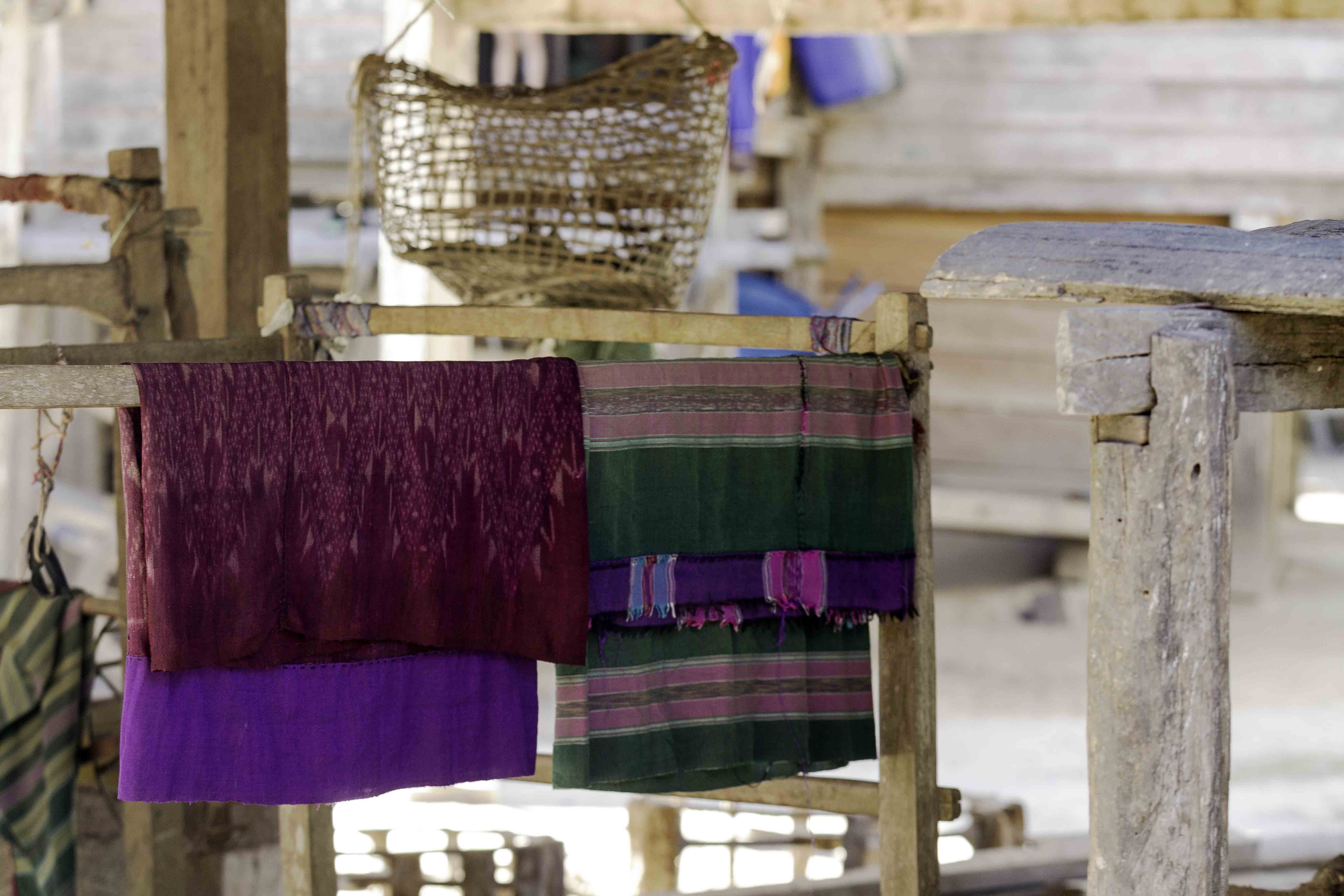
We traveled a bit further to the neighboring province of Salavan, which only became an independent province in 1984 when it separated from Sekong, to visit the colorful Wat Kang. Filled with magnificent paintings depicting ancient stories, this pagoda is situated inside a temple complex in the heart of the city center. If you are in the mood for even more textiles, drop by Toumlan District to experience a Katang weaving village, another ethnic group in Southern Laos. Of course, a trip to Salavan is not complete without a visit to popular Tad Lo and Tad Hang waterfalls.
Discover Attapeu’s border with Vietnam and experience the Ho Chi Minh trail on a dirt bike or their scrumptious local cuisine, particularly the minced pork and herbs steamed inside papaya leaves known generically as “Mouk Moo.” Attapeu is also known for Ginseng, a plant root that has been used in traditional Chinese medicine for centuries.
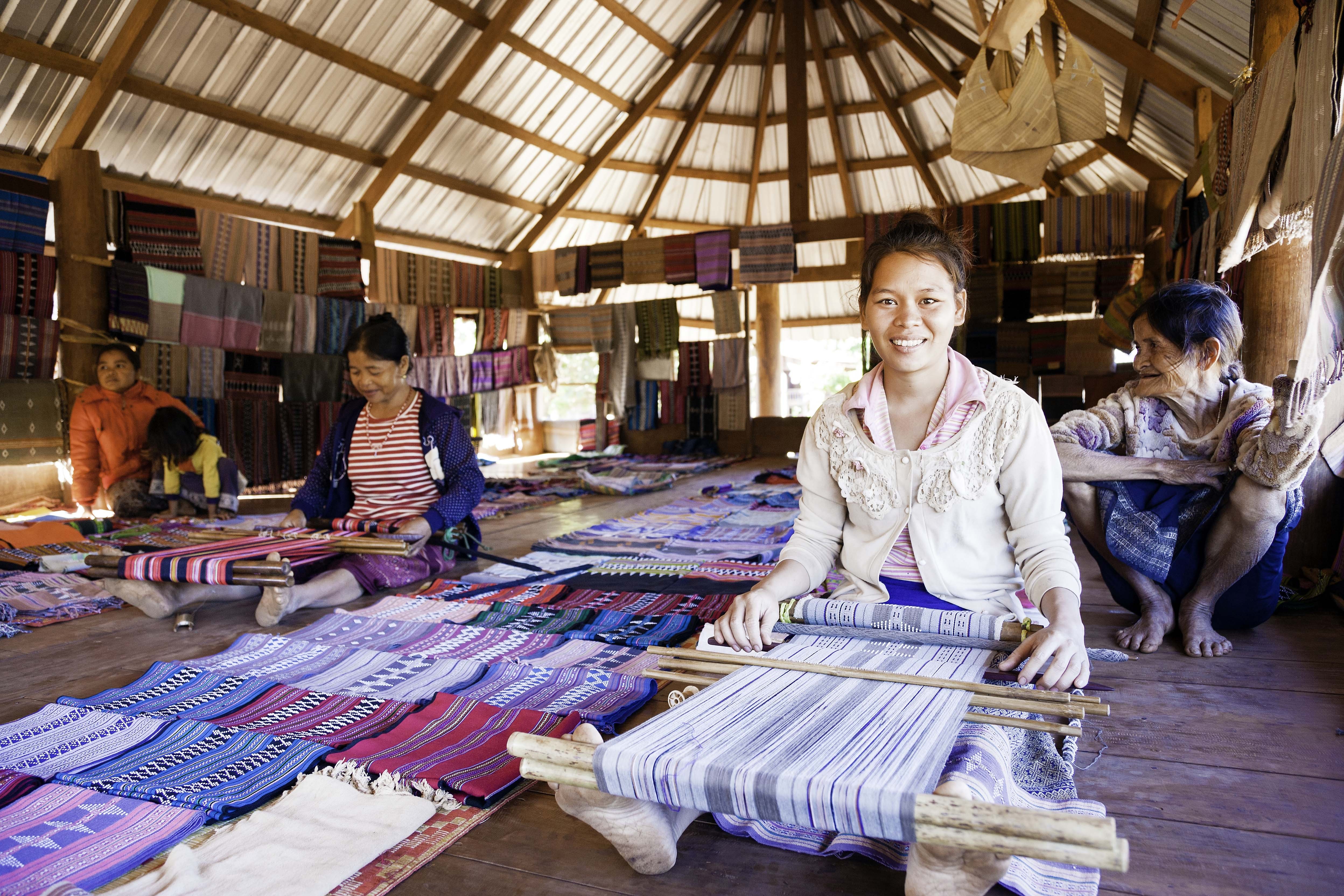
In Attapeu, you can witness the creation of unique and diverse artifacts of several ethnic tribes, such as the ancient art of pottery making and jewelry of the Talieng ethnic group or the woodworking of the Lavae people. Also, learn more about the matriarchal traditions of the Alak ethnic group and the animism and shamanism rituals of the Ta Oy while you’re here.
After spending some days learning about the ethnic groups of Southern Laos, it’s disheartening to find out that modernity is slowly changing the traditions that have remained unchanged for decades or even hundreds of years. As visitors, we felt fortunate to have gained these insights, while we still could, about the region’s different cultures and customs.
GETTING THERE
Lao Airlines has daily flights to Pakse from Siem Reap, Vientiane, and Luang Prabang, as well as frequent flights from Bangkok.
MORE INFO
Sekong Tourism Office
for Ban Khan Don:
038211361
Salavan Tourism Office: 034211528
Attapeu Tourism Office:
02097910333 & 02095219842
Tad Lo Tourism Office: 02054455907
Mr. Khamlay’s Textile Shop:
Whatsapp +856 20 98 287370
Visit southern-laos.com for more information
Text BY Dyan Barutzki & Viphat Sengmany, Village Chief of Ban Khan Don
PHOTOGRAPHS BY Swisscontact / Bart Verweij

